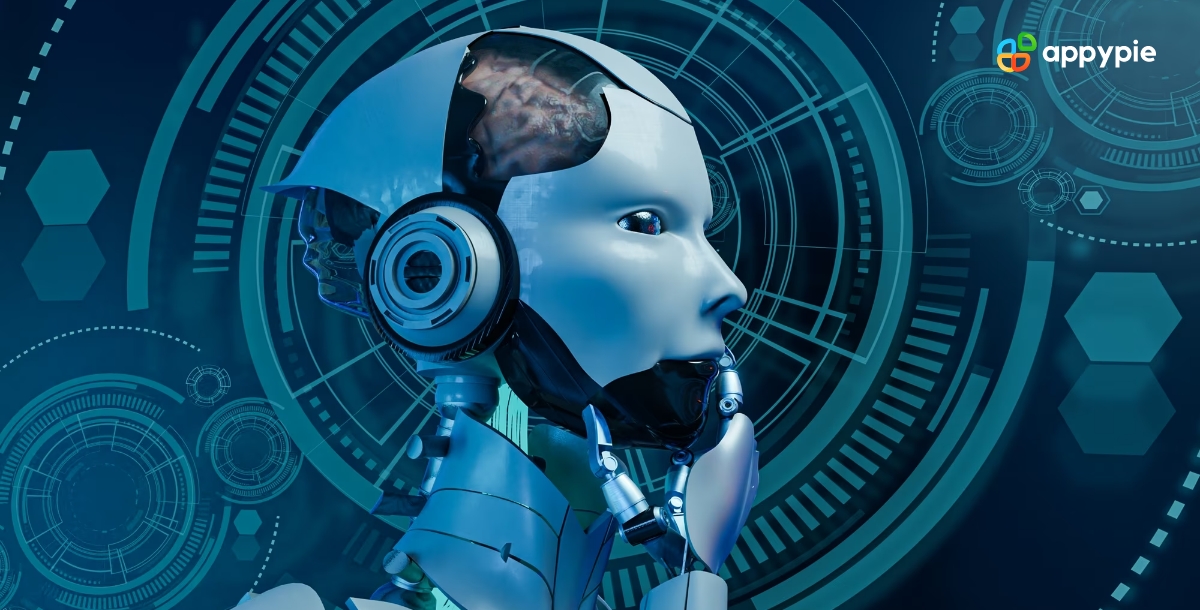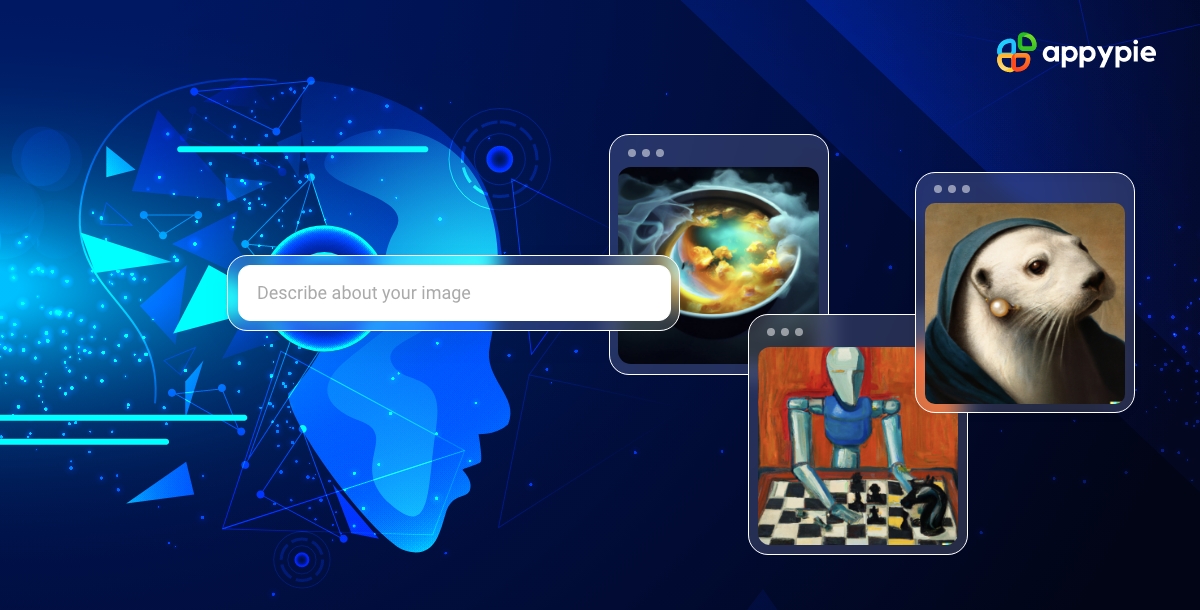How AI DALL.E is Revolutionizing the Art of Image Generation?

Artificial Intelligence has gone toe to toe with human intelligence regarding creative bouts. AI is able to beat grandmasters in chess, play orchestral music, pump out poems, and do you know what's new? It can now create detailed image art from a worded short prompt.
The team of Open AI has created a robust piece of software that can produce an array of images in a matter of seconds; all it needs is a string of sensible words.
The software is called DALL-E, and it was created to revolutionize how we make images with AI. In this blog, let's go through DALL-E in detail and better understand what it does, its limitations, and its future possibilities.
What does DALL.E do?
In 2021, one AI research & development company, Open AI, created software called 'DALL-E.' The name is given by blending a fictional character from the animated film Wall-E and Salvador Dali. The software is able to create unique AI-generated images with worded prompts.

Though impressive, the images created used to be often blurry, not accurate, and took a while to get generated. Now, over time Open AI has come up with various improvements to the program, creating DALL-E 2. It is a robust new repetition that produces images at a way higher level.
Along with these new, improved features, the main difference between the second model and the first one is that the resolution of the generated image has improved along with the lower latencies and an intelligent algorithm for generating images.
The program doesn't just generate images in only one style, but you can also add multiple techniques to your prompts such as style of drawing, plasticine model, drawn on a wall, 1960s movie poster, or oil painting.
Though DALL-E is considered a helpful assistant that intensifies what a normal human being can do, it is also very much dependent on the intelligence and creativity of the user. If you're creative, you can create some fascinating stuff out of it.
How does it Work?
Apart from the ability to generate images based on text prompts, it also has other clever techniques, such as variations and inpainting. These two applications were not present on DALL-E and have been introduced in DALL-E 2 only; that works very similarly to the older version but with a twist.

With inpainting, a user can edit or add new features to an existing image, or you can change a few parts of it. For example, suppose you already have a living room image. In that case, you can add a dog on the couch or a different rug, improvise the interior, such as changing the color of the wall painting, or even put the elephant in the living room. That means whatever goes well.
As far as the variations tool is concerned, it is another application that works with an existing image. This tool can create hundreds of versions, such as feed-in photos, illustrations, or any other image style.
For example, if you give it an image of Teletubbies, it can replicate it, creating precisely the same version. Also, it can create similar versions of old samurai paintings or even pictures of graffiti. The variation tool can also combine two pictures and make them a single, collaborated image.
DALL-E: Limitations
Though there is no doubt about how impressive this AI Image Generator technology is, it does come with a few limitations. One of the most common issues that you face with Dall-E is that it gets confused with specific phrases or words. This also happens when a particular term has multiple meanings; the phrases or words could be misunderstood or if slang or colloquial language is used.

In order to get the perfect image from the text prompt, the user has to learn how the artistic styles of these prompt work. When a new user inputs a prompt, the initial picture it gives technically matches all your requests; but it doesn't match the exact idea or feeling you had while writing the prompt, so the result would not be desired. However, you get what you're looking for by getting used to the style and with minor adjustments.
Another department that DALL-E lacks is variable blending. If you give too many commands simultaneously, the machine gets confused and might do the opposite. However, the team has been working on it to resolve this issue asap.
Human Manipulation
Like any other good thing over the internet, DALL-E didn't take long for critical issues to arise. The most common one is how this technology is used immorally and unethically. And we can't ignore the history of uncouth behavior of people on the internet when any new AI technology comes in.
So, when something like the technology of creating images comes up, it's undeniable that there will be manipulations, such as manipulated images, propaganda, fake news, and so on.
In order to get rid of this, the team of Open AI has come up with a safety precaution for all generated images that consists of three stages. The first stage is filtering out all data that involves a significant violation, such as inappropriate images, sexual content, and violence.
The second stage involves filtering out those subtle points that are more difficult to detect. This can be propaganda or political content of some kind. In the final step, every image generated by DALL-E is evaluated by humans; however, as the technology grows, this wouldn't be a feasible stage in the long run.
Despite using this policy, the technical team is very much clear with the forthcomings of this technology. In addition, the team has listed all the limitations and risks of DALL-E regarding future issues the technology could face. This covers many issues, such as stereotypes or biased images like older men as lawyers, female nurses, or wedding returns.
These are not considered any new problems, and this is something the internet has been dealing with for so many years. Therefore, image-generating technology could follow the prejudices we've seen in society.
Also, there are a few ways to trick the technology, and a user can produce the content that needs to be filtered out. For example, a user can type a pool of tomato soup that looks like a pool of blood, which could trigger violence. So, along with the safety policy, they also have a content policy that needs to be abided by the users.
The Future DALL-E Holds
Since the image-generating technology is all out there and performing well, what's next for the technical team behind DALL-E? The software is being rolled out slowly through a waitlist with no plans to open the technology to the broader public.
By slowly developing the new technologies in the product, the team of Open AI can monitor the development and growth and prepare their product for the upcoming millions of people that will soon start imputing their commands.
The technology is definitely going to deploy widely after getting feedback from the users.
Related Articles
- How Event Automation Simplifies Event Management Processes?
- How Mobile Strategy Can Push In-Store Sales?
- The 10 Best Slack apps, Integrations and Bots to Improve Your Team’s Productivity
- 6 Best Free Movie Websites Online in 2023 – A Complete List
- The Essentials of a Good Background Design
- 6 Best Free Invoice Software for Businesses in 2023
- 15 Best Data Recovery Software in 2024
- Evernote vs. OneNote: Which app is best for you? [Top Integrations]
- How to drive more traffic to your website?
- Bitcoin logo and its Crypto History: The Story of the Big Orange “B”
